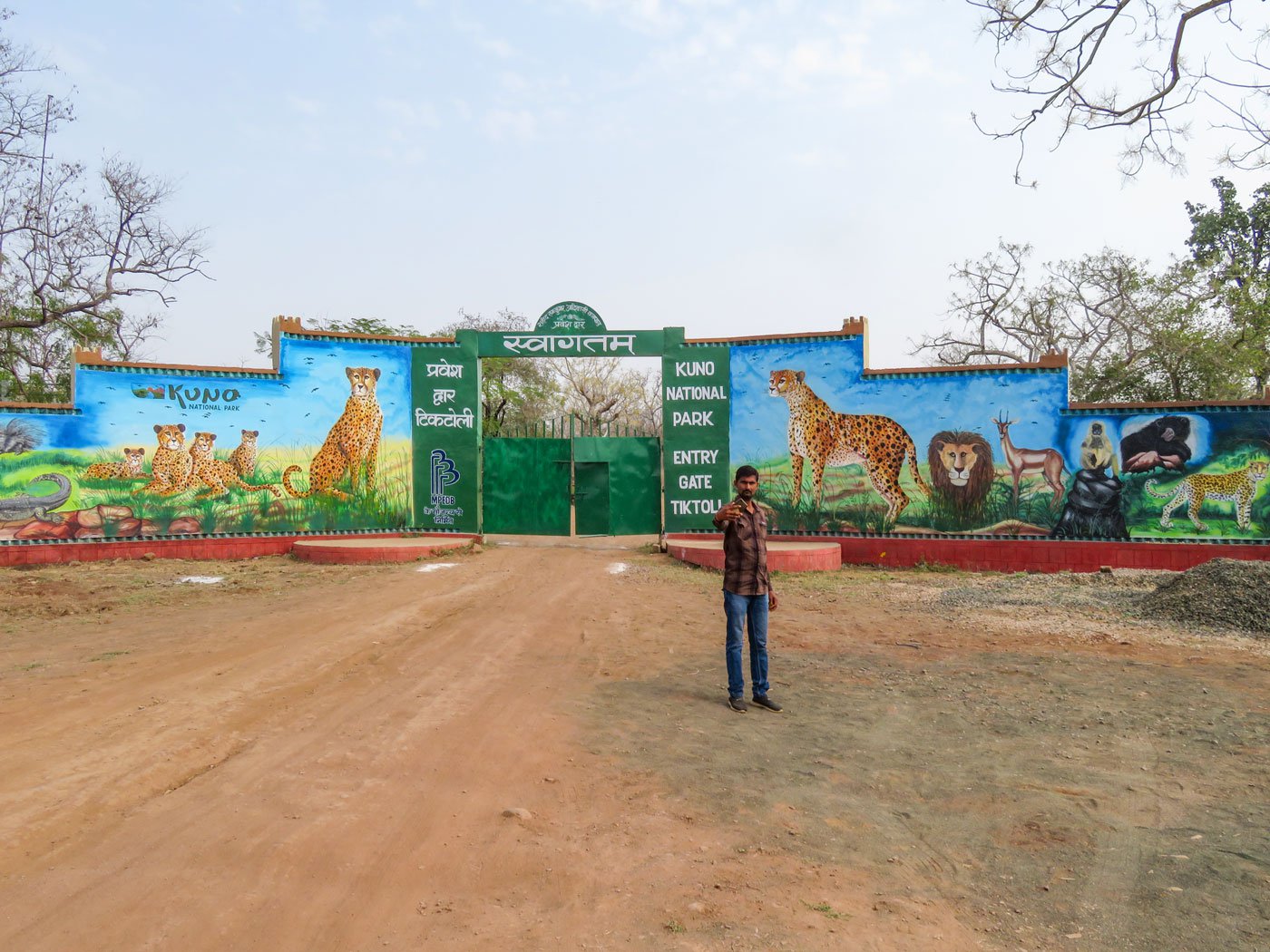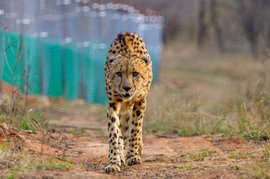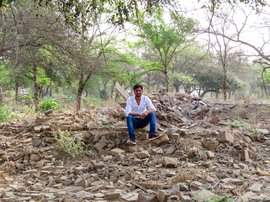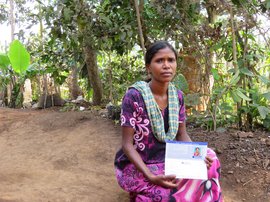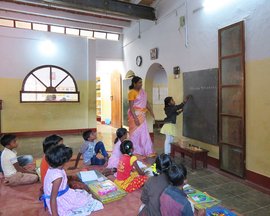“ Mein tez daud ke aaonga, aur Kuno mein bas jaoonga [I will come running and set up home in Kuno].”
That’s Chintu the Cheetah speaking to anyone willing to listen or able to read – from a poster.
The poster was put up six months ago by the Forest Department of Madhya Pradesh acting on official orders from higher-ups. It has found its way into all the villages surrounding the Kuno National Park, where ‘Chintu Cheetah’, the friendly character in the poster, is planning to make his home.
The home for Chintu is one he will share with 50 real-life African cheetahs. But not with the 556 human beings in Bagcha village who are set to be displaced and relocated elsewhere. An exile that will fatally disrupt the livelihoods and everyday existence of these mainly Sahariya Adivasis whose world is so closely intertwined with the forests.
Only tourists who can afford what are likely to be high-priced safari rides to see the imported cheetahs will make it into the national park. That, by default, excludes local residents, most of whom are below the poverty line.
Meanwhile, the poster and cartoons of a ‘lovable’ spotted cat have confused some like eight-year-old Satyan Jatav of Paira Jatav, a hamlet 20 kilometres outside the sanctuary, who asked his father, “Is this a goat?” His younger brother, Anurodh, barely four years old, piped up saying it must be a kind of dog.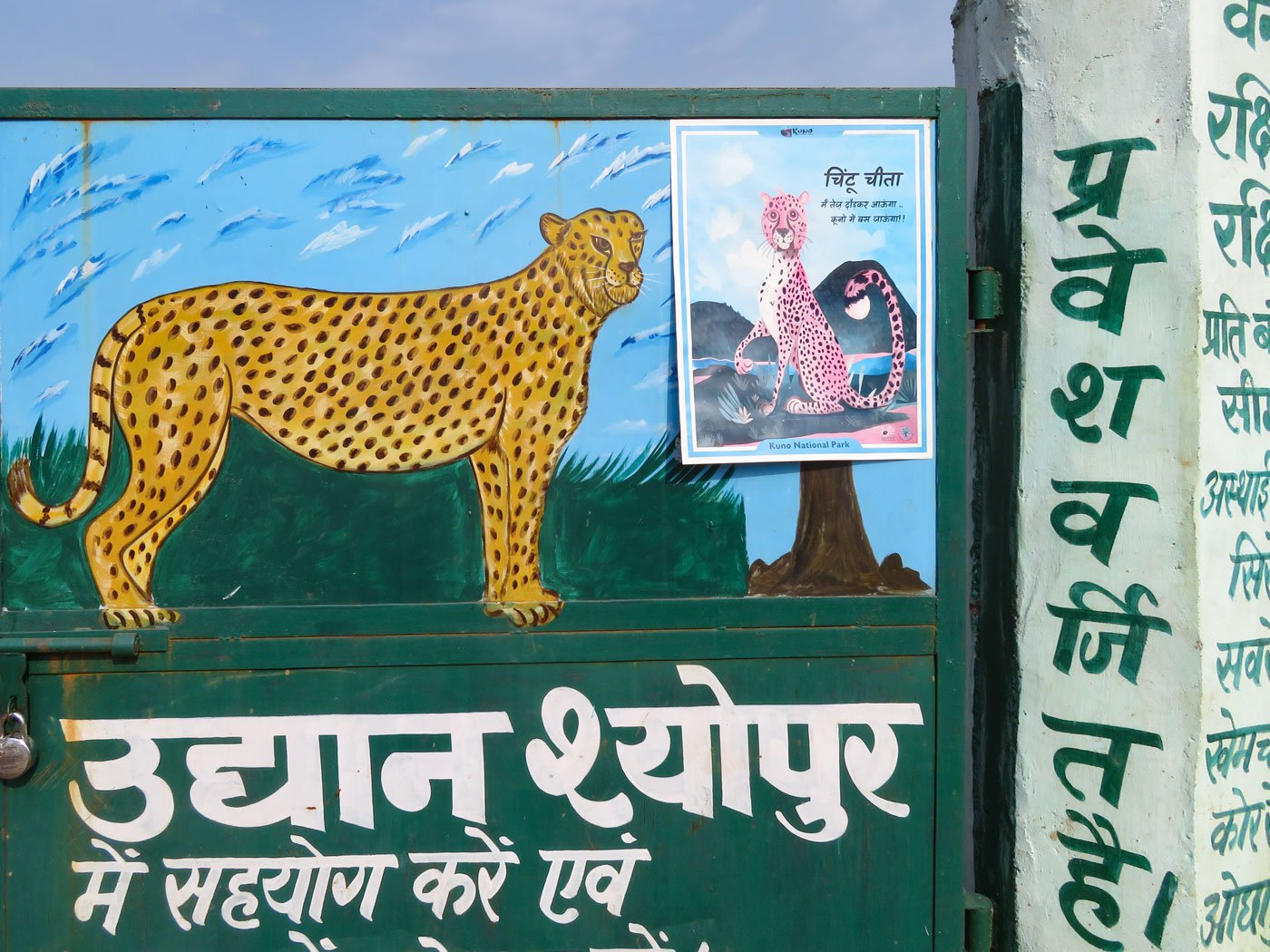
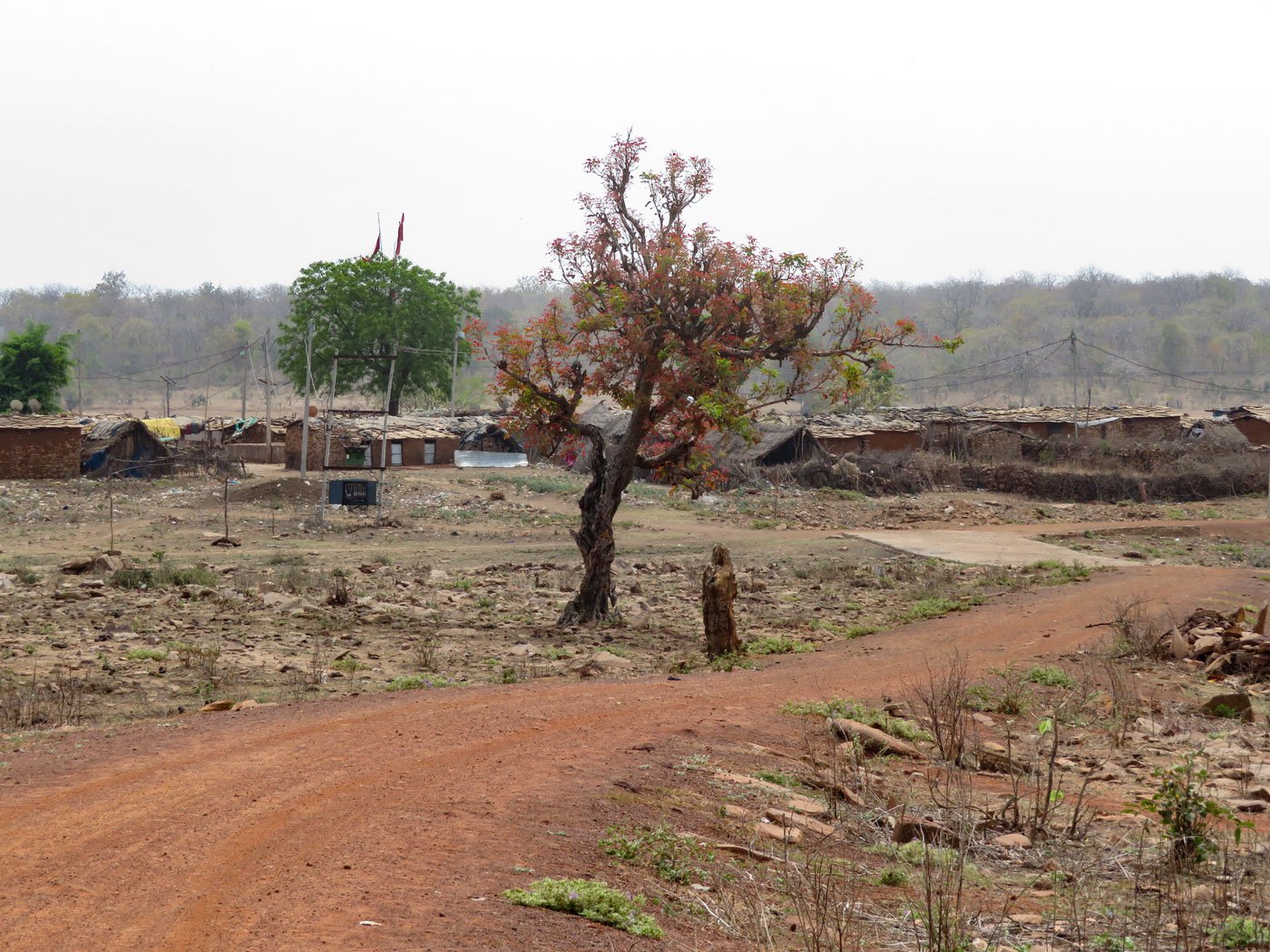
Left-
A poster of 'Chintu Cheetah' plastered on the gate of Kuno National Park. Right:
Bagcha village, at the edge of the national park
Following up on the Chintu announcement came two detailed comics, also put up as posters. Two child characters, Mintu and Meenu, share information about the cheetah. They claim it never attacks humans and is safer than a leopard. Mintu even says he plans to race it.
Hopefully, if the Jatav boys do encounter a cheetah, they will not try to pet the big cat.
Here is the real story, and there is nothing cute about it.
Acinonyx jubatus – the African cheetah – is a potentially dangerous large mammal and the fastest land animal. It is a vulnerable species, not native to India, and will throw hundreds of local families out of their homes.
*****
“On March 6 this year, a meeting was called at the forest chowki down there,” says Ballu Adivasi, 40, pointing to the Kuno jungle on the edge of his village, Bagcha. “We were told that this area has become a national park and we have to move.”
Located on the western edge of Madhya Pradesh’s Sheopur district, Bagcha is a village of Sahariya Adivasis, who are ranked as a Particularly Vulnerable Tribal Group (PVTG) in Madhya Pradesh with a literacy rate of 42 per cent. This village in Vijaypur block has a population of 556 people (Census 2011), who live in mostly mud and brick homes with stone slabs as roofing, surrounded by the national park (which is also referred to as Kuno Palpur) where the Kuno river flows.
The Sahariyas practice rain-fed farming on small parcels of land and
depend upon Kuno for non-timber forest produce (NTFP) to sell
Kallo Adivasi is now in her 60s and has lived all her married life in Bagcha. “Our land is here. Our jungle is here, our house is here. Whatever is here is ours. Now we are being forced to leave.” A farmer, gatherer of forest produce, and mother of seven children and many grandchildren, all of whom live with her, she asks, “What good will the cheetah bring?”
To get to Bagcha one has to leave the highway from Sheopur going to Sironi town, and enter a dirt road that winds through deciduous forests of
kardhai
,
khair
and
salai
trees
.
Twelve kilometres later, the village appears on a rise, with large numbers of stray cattle milling around. The closest public health centre is 20 kilometres away and can be accessed by a call to 108, that is when the phone lines and network are operational. There is a primary school in Bagcha, and to study beyond Class 5, children have to move to the middle school at Ochha, a good 20 kilometres away, and stay there during the week.
The Sahariyas practice rain-fed farming on small parcels of land and depend upon Kuno for non-timber forest produce (NTFP) to sell. The latter will disappear once they are displaced. NTFP such as the resin (
gond
) extracted
from
chir
trees is a major source of income. As are a host of other resins,
tendu
leaves, fruits, roots and herbs. The Sahariyas calculate that their annual income from this source can touch Rs. 2 lakhs to 3 lakhs for a household (average size of 10 persons) if all seasons are good. That along with the ration received on their BPL (below poverty line) cards, guarantees some food stability if not real security.
Moving out of the forest will end all that. “The comfort of the forest will go. We will no longer have access to
chir
and other
gond
that we now collect and sell to buy salt and oil. That will end. We will be left with only casual labour work as an option to earn,” points out Hareth Adivasi, a Sahariya in Bagcha.
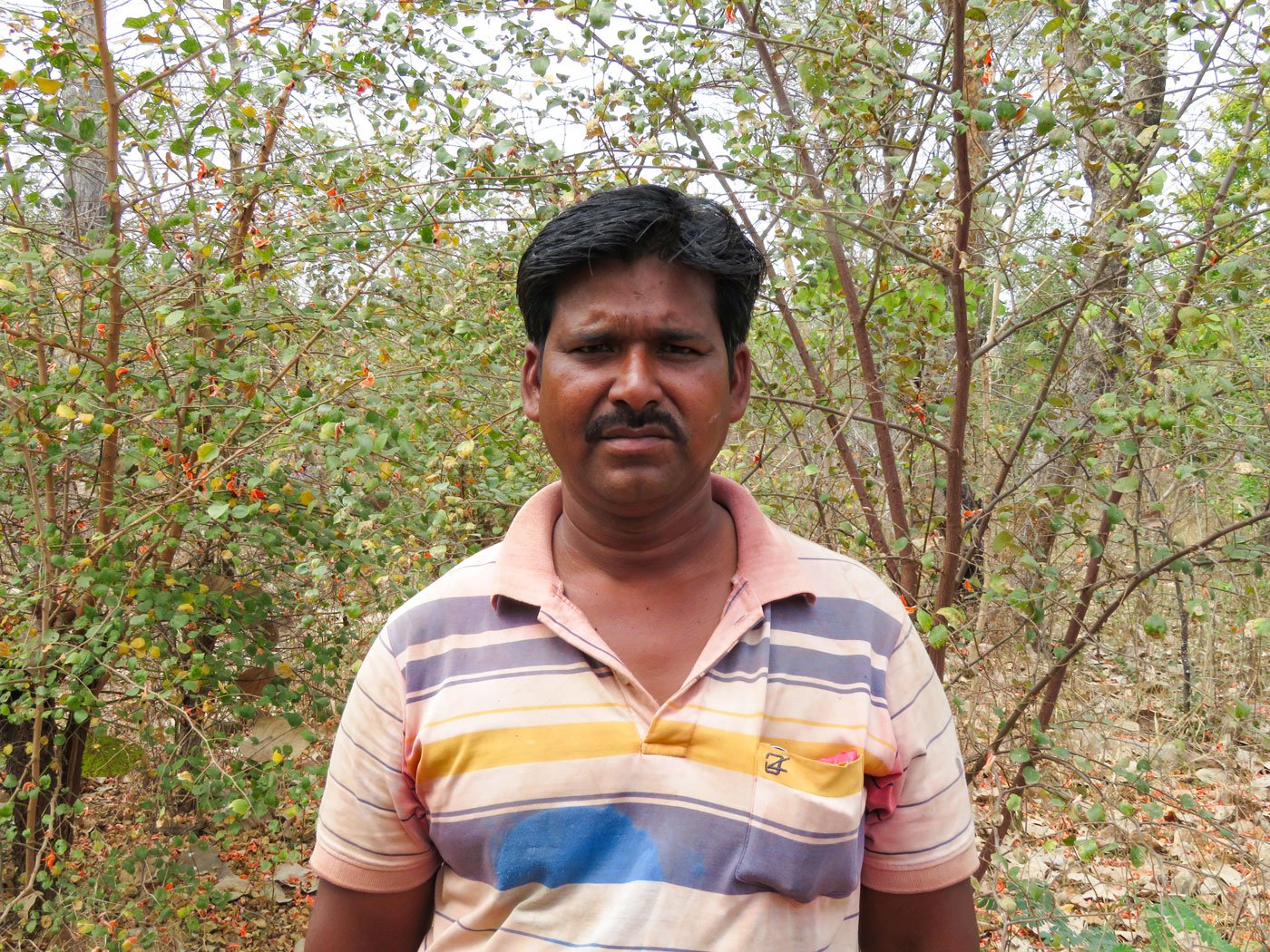
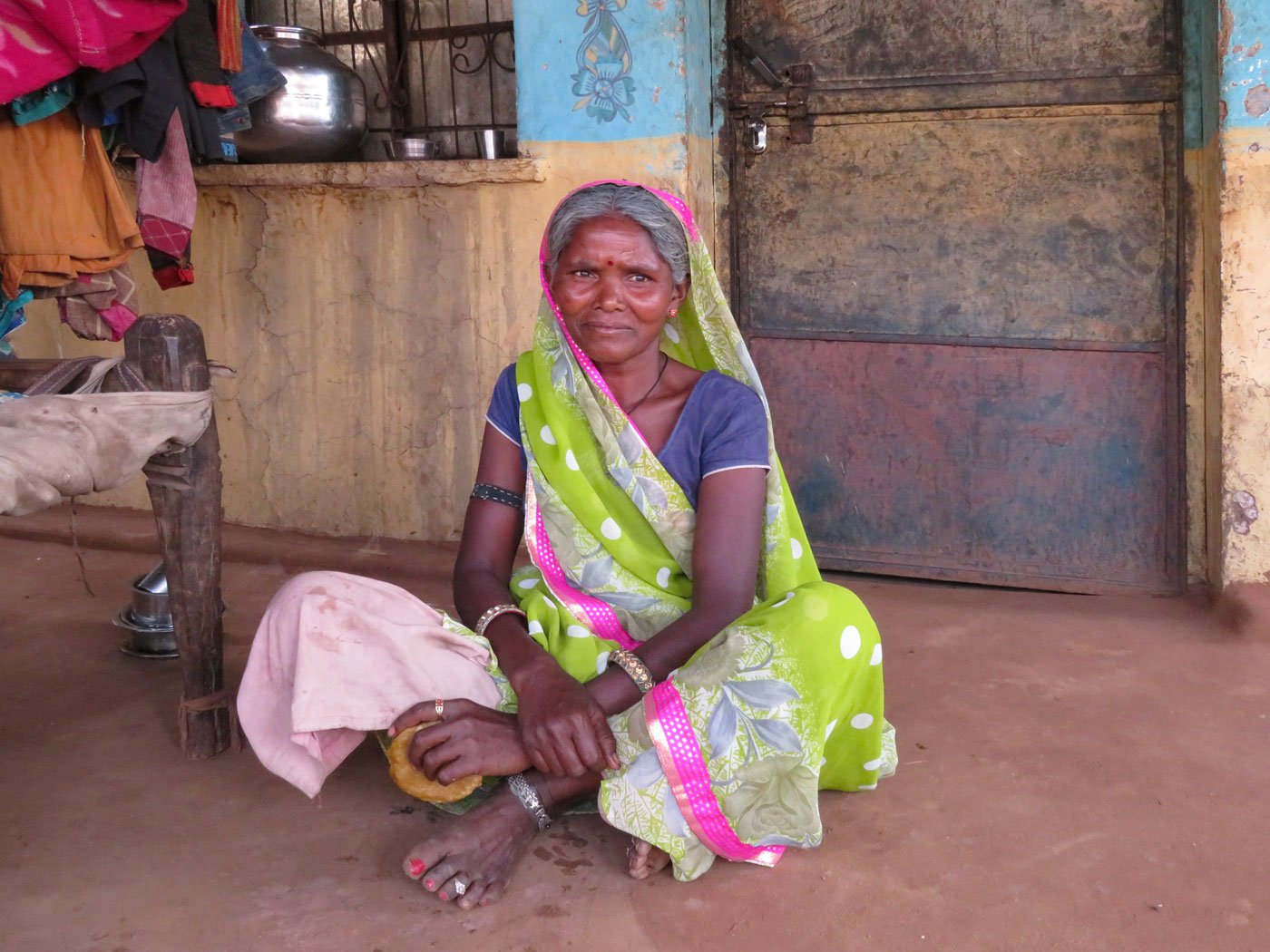
Left: Ballu Adivasi, the headman of Bagcha village. Right: Kari Adivasi, at her home in the village. “We will only leave together, all of us”
The human and economic costs of displacement are significant, says Prof. Asmita Kabra. A conservation displacement expert, her research in Bagcha in 2004 showed that the village had a substantial income from marketable forest products. “The landscape contributed firewood, timber, herbs, fruits, mahua and more,” she says. With 748 square kilometres, according to the official website, Kuno National Park covers a sizeable area and falls within the larger Kuno Wildlife Division – a total of 1,235 sq km.
Besides the bounty from the forest, the agricultural land that has been continuously cultivated since generations will be difficult to replace. “When it rains we are able to grow
bajra
,
jowar
,
makka
,
urad
,
till
,
moong
and
ramaas
[
lobia
], and we also get vegetables like
bhindi
,
kaddu
,
tori
,” says Hareth Adivasi.
Kallo, whose family farms 15
bigha
(less than 5 acres), seconds that, saying, “Our land here is very productive. We do not want to leave, but they can force us to leave.”
The plan to move the Sahariyas out of the forest to make the jungle an inviolate space for the cheetah, is being done without proper ecological research, says Prof. Kabra. “It is of course easier to push out tribals because, historically, the relationship between the forest department and tribals is hegemonic – the department controls multiple aspects of their lives,” she says.
Ram Charan Adivasi’s recent experience of being thrown into prison validates this. He has been in and out of the forests of Kuno since he was born 50 years ago, first going in on the back of his mother when she went to fetch firewood. But in the last 5-6 years, the forest department has curtailed the access of Ram Charan and his community to these resources, reducing their incomes by at least half. “The rangers have put false cases on us [in the last five years] for poaching and hunting and even threw us [his son Mahesh and him] in jail in Sheopur. We had to raise 10,000-15,000 rupees somehow for bail and fines,” he says.
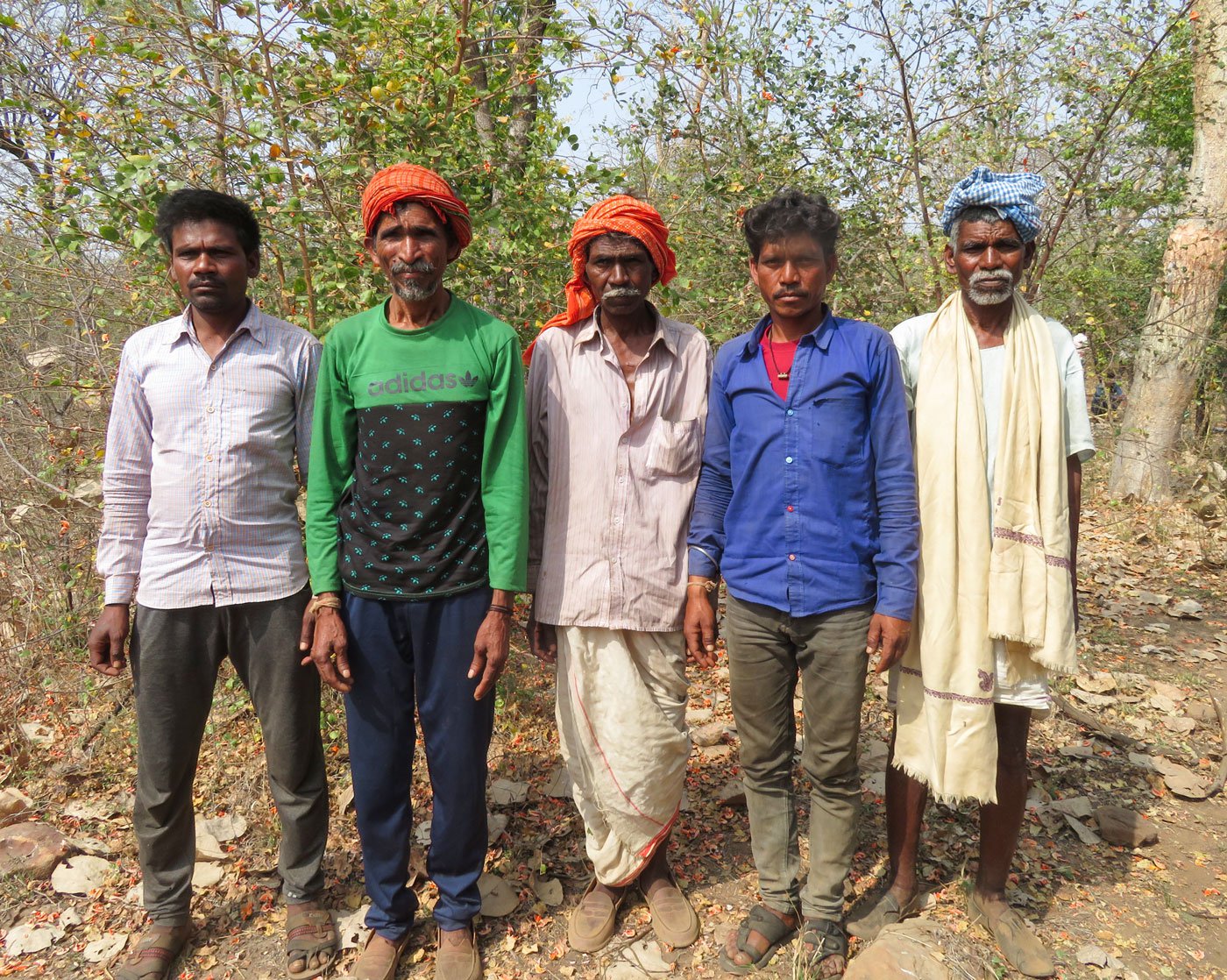
Residents of Bagcha (from left): Mahesh Adivasi, Ram Charan Adivasi, Bachu Adivasi, Hari, and Hareth Adivasi. After relocation to Bamura village, 35 kilometres away, they will lose access to the forests and the produce they depend on
Despite the imminent threat of eviction and almost daily run-ins with the forest department, Bagcha’s folk are trying to put on a brave face. “We are not yet displaced. At the gram sabha meeting we made our demands very clear,” says Hareth in a strong voice, surrounded by a group of residents. The 70-year-old is a member of the newly constituted gram sabha , which he says was formed at the behest of the forest department on March 6, 2022 to put in motion the relocation. Under the Forest Rights Act, 2006 [section 4(2)(e)], only when and if the village gram sabha gives its consent in writing can any eviction process begin.
Referred to by others as the headman of the village, Ballu Adivasi tells us, “We informed the officials that you have written the number of eligible names as 178, but we are 265 people in the village who are entitled to compensation. They did not agree to our number, and we said we would not move till you promise all of us compensation. They said they will do it in 30 days.”
The meeting was held a month later, on April 7, 2022. The evening before, the entire village was asked to be present the next day. When it began at 11 a.m., they were told by the officials to sign a paper saying they were not being forced and had agreed to move out willingly. The paper listed only 178 people as eligible for relocation compensation. The gram sabha refused to sign.
The Sahariyas’ tough stand is bolstered by the still painful memory of unfulfilled promises to their neighbours in the Kuno forest – the 28 villages with an estimated 1,650 families who were hurriedly moved out of their homes in 1999 to make way for lions from Gujarat. “To date the government has not fulfilled its promise to those people. They are still running behind the sarkar for their dues. We don’t want to be caught in that situation,” adds Ballu.
Oh, and the lions never did show up. It’s been 22 years now.
*****
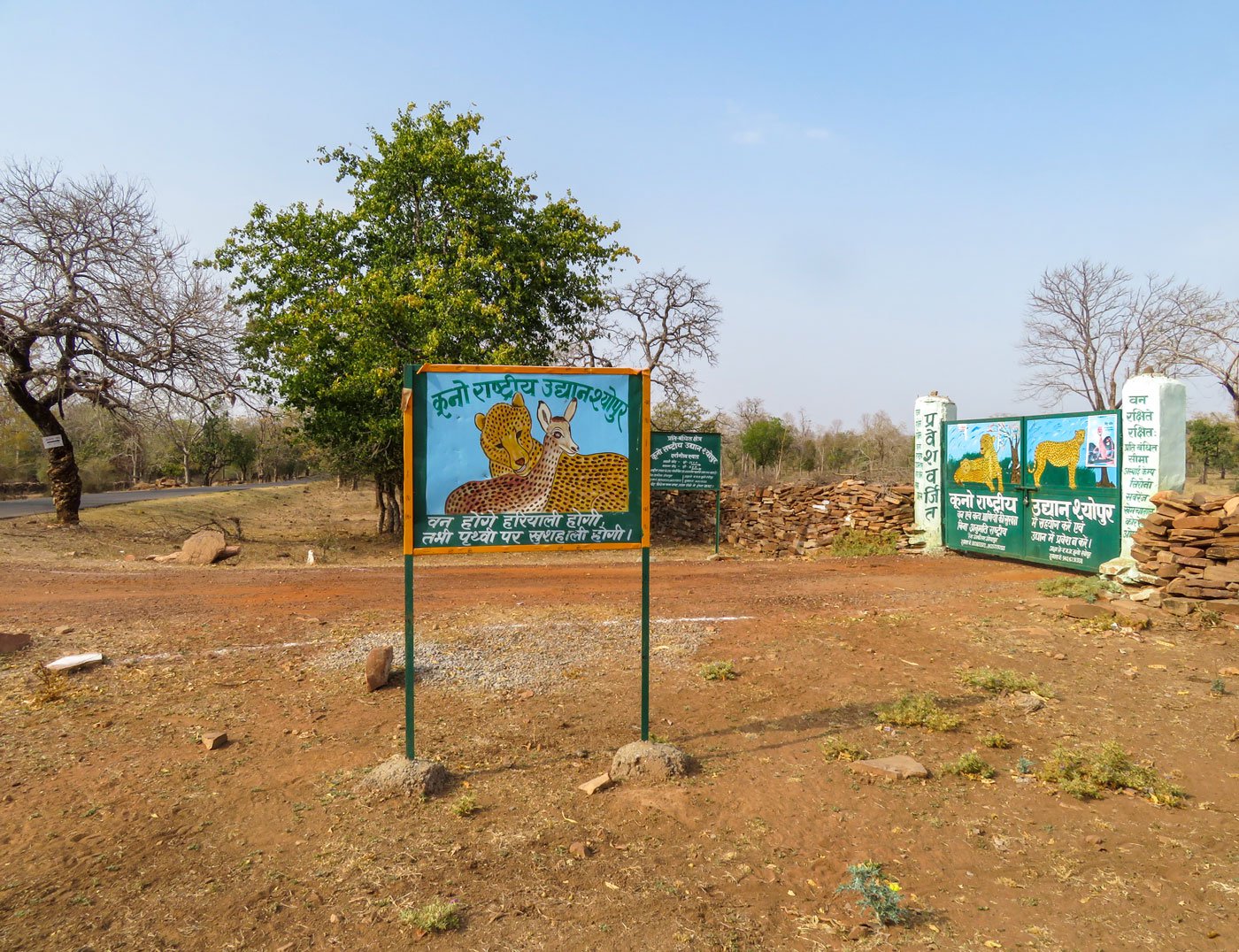
Painted images of cheetahs greet the visitor at the entrance of Kuno National Park in Madhya Pradesh's Sheopur district
Hunted to extinction in India, the Asiatic cheetah ( Acinonyx jubatus venaticus ) – a tawny, spotted wild cat – is a familiar figure in history books and shooting legends. The last three Asiatic cheetahs in the country were shot dead in 1947 by Ramanuj Pratap Singh Deo, the then maharaja of Koriya, a little-known princely state now in Chhattisgarh.
Deo’s act toppled India from its position as the only place on the planet where all the six big cats lived – lion, tiger, cheetah, common leopard, snow leopard and clouded leopard. Photos of fast and powerful big cats, ‘kings of the jungle’, dominate many of our official images. The Ashoka Chakra, used in official seals and currency notes, has an image of the Asiatic lion. Stung by what was seen as a blow to national pride, successive governments ensured that the loss of cheetahs stayed on the conservation agenda.
The Ministry of Environment, Forests and Climate Change (MoEFCC) put out a
document
titled ‘Action Plan for Introduction of Cheetah in India’ in January this year. This informs us that the very name of the animal ‘cheetah’ originates from Sanskrit and means ‘the spotted one’. Also, cave paintings in central India, dating back to the Neolithic era, depict the cheetah. By the 1970s, the Indian government was in talks with the Shah of Iran to spare a few Asiatic cheetahs to re-establish a population of cheetahs in India.
The issue picked up again in 2009 when MoEFCC asked Wildlife Institute of India and Wildlife Trust of India to assess if cheetahs could be introduced into the country. The only remaining Asiatic cheetahs are found in Iran, but their numbers are too few to import any. So the African cheetah, found in Namibia and South Africa, was considered as it looks similar, never mind that their evolutionary histories place them approximately 70,000 years apart.
Ten sanctuaries across central India were surveyed and the 345 sq km Kuno Sanctuary, which was upgraded to the 748 sq km Kuno Palpur National Park in 2018 to house the lions, was considered most suitable. There was only one inconvenience: the village of Bagcha that fell within the park would have to be moved. Shockingly, a
press release
by MoEFCC in January 2022 described Kuno as “devoid of any human settlements…”
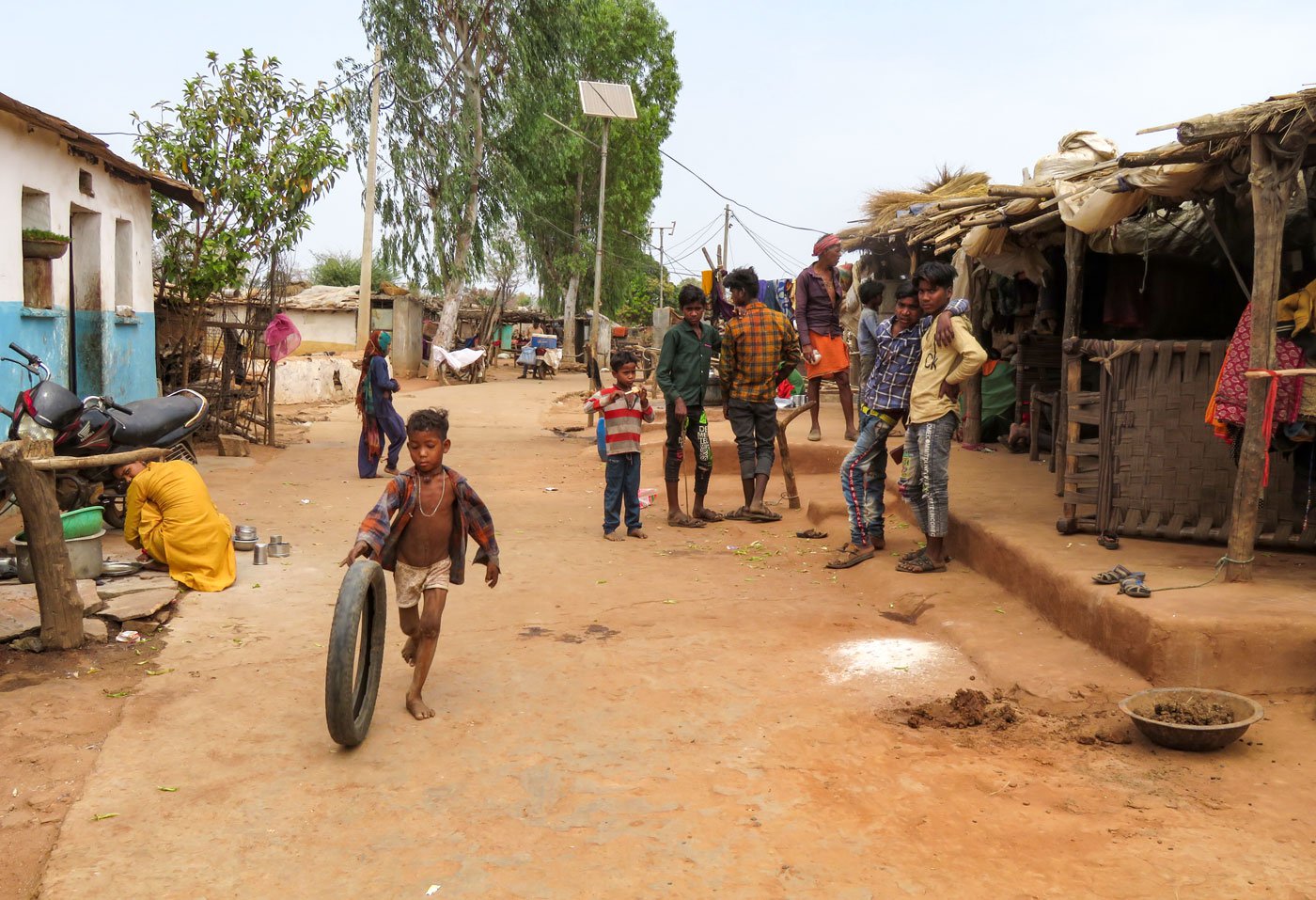
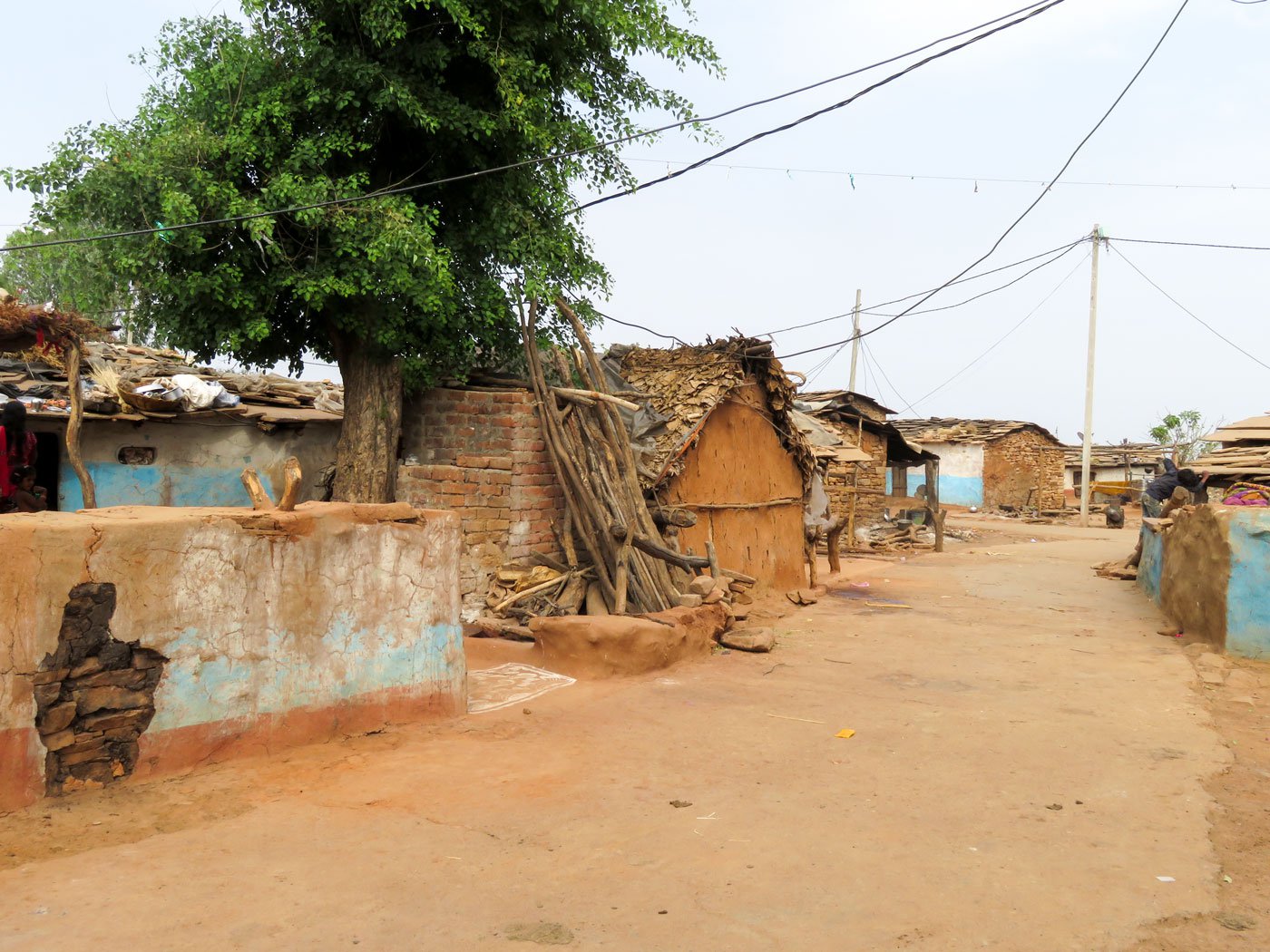
Bagcha is a village of Sahariya Adivasis, listed as a Particularly Vulnerable Tribal Group in Madhya Pradesh. Most of them live in mud and brick houses
The action plan document says introducing the cheetah will “allow the tiger, leopard, lion and cheetah to coexist as in the past”. There are two glaring errors in that statement. This is the African cheetah, not the Asiatic one that was native to India. And lions don’t live in Kuno presently because the Gujarat government hasn’t sent them, despite a 2013 Supreme Court order.
“It’s been 22 years now and the lions have not come and neither will they come in the future,” says Raghunath Adivasi. A long-time resident of Bagcha, Raghunath is now worried about losing his home since this is not the first time that villages in the vicinity of Kuno have been ignored, dismissed or simply passed over.
The translocation of the ‘kings of the jungle’ was sparked by growing concern of wildlife conservationists that the last of the Asiatic lions (
Panthera leo leo
)
were all concentrated in one location – the Saurashtra peninsula in Gujarat. An outbreak of a canine distemper virus, a forest fire or other dangers could wipe out the entire population unless some were relocated elsewhere.
Not just Adivasis, but Dalit and Other Backward Class forest dwellers also assured the forest department that they could coexist with the animals. “We thought, why do we need to move for the lions? We know animals, we are not scared of them. We grew up in the jungle.
Hum bhi sher hain!
[We too are lions!],” says Raghulal Jatav, a 70-year-old resident of Paira village that was once inside the national park. He lived there till he was 50, and says nothing untoward ever happened.
There is no historical or contemporary record of any attack on humans by cheetah, says conservation biologist Dr. Yadavendra Jhala, dean of Wildlife Institute of India (WII). “Conflict with humans is not a major concern. People living around proposed cheetah reintroduction sites are used to living with large carnivores and have appropriate lifestyles and animal husbandry practices to minimise conflict.” The rest is taken care of by a budget for cattle losses if any.
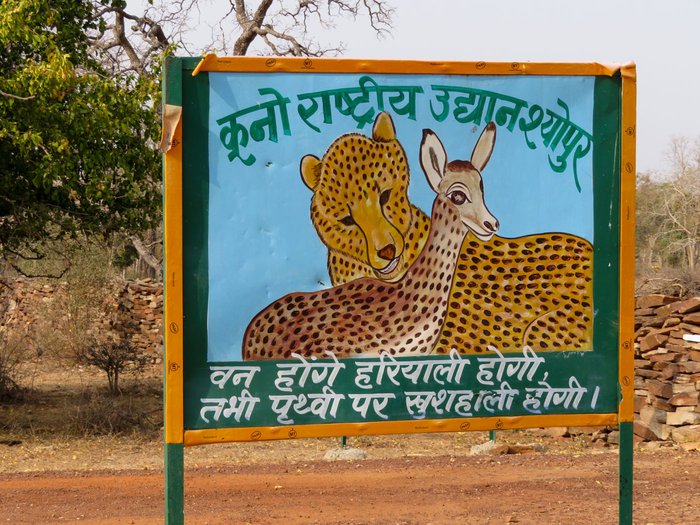
The Asiatic cheetah was hunted into extinction in India in 1947, and so the African cheetah is being imported to 're-introduce' the animal
The meeting was held on April 7, 2022. The evening
before, the entire village was asked to be present the next day. When it
began at 11 a.m., they were told by the officials to sign a paper
saying they were not being forced and had agreed to move out
Ignoring both indigenous people and scientists, the union government said in the January 2022 press release: “Project Cheetah aims to bring back independent India’s only extinct large mammal – the cheetah.” And further, that the move “will boost eco-tourism and associated activities”.
The African cheetah is expected to land in India by August 15 – ironically, Independence Day – this year.
Bagcha village will be its first prey.
District Forest Officer Prakash Verma, who is overseeing the displacement plan, says, from the budget of Rs. 38.7 crores for the cheetah introduction project, Rs. 26.5 crores will be used for displacement expenses. “Around 6 crore rupees is being spent on the enclosure for the cheetah, on water and clearing of roads, and for the training of forest officials to manage the animal,” he says.
A 35 sq km enclosure with watchtowers strung along every two kilometres, and smaller enclosures of 5 sq km each, are being created to house the first shipment of 20 cheetahs from Africa. Every possible care is being taken to ensure the cheetahs thrive. And rightly so: the African cheetah (
Acinonyx jubatus
) is mentioned as vulnerable in an
IUCN report
on wildlife in Africa. Other reports record the serious decline in its population.
In sum, it’s an almost Rs. 40 crore outlay for bringing in a non-native, vulnerable species into an alien environment – and removing native and particularly vulnerable scheduled tribe communities to make space for them. It gives new meaning to the term ‘human-animal conflict’.
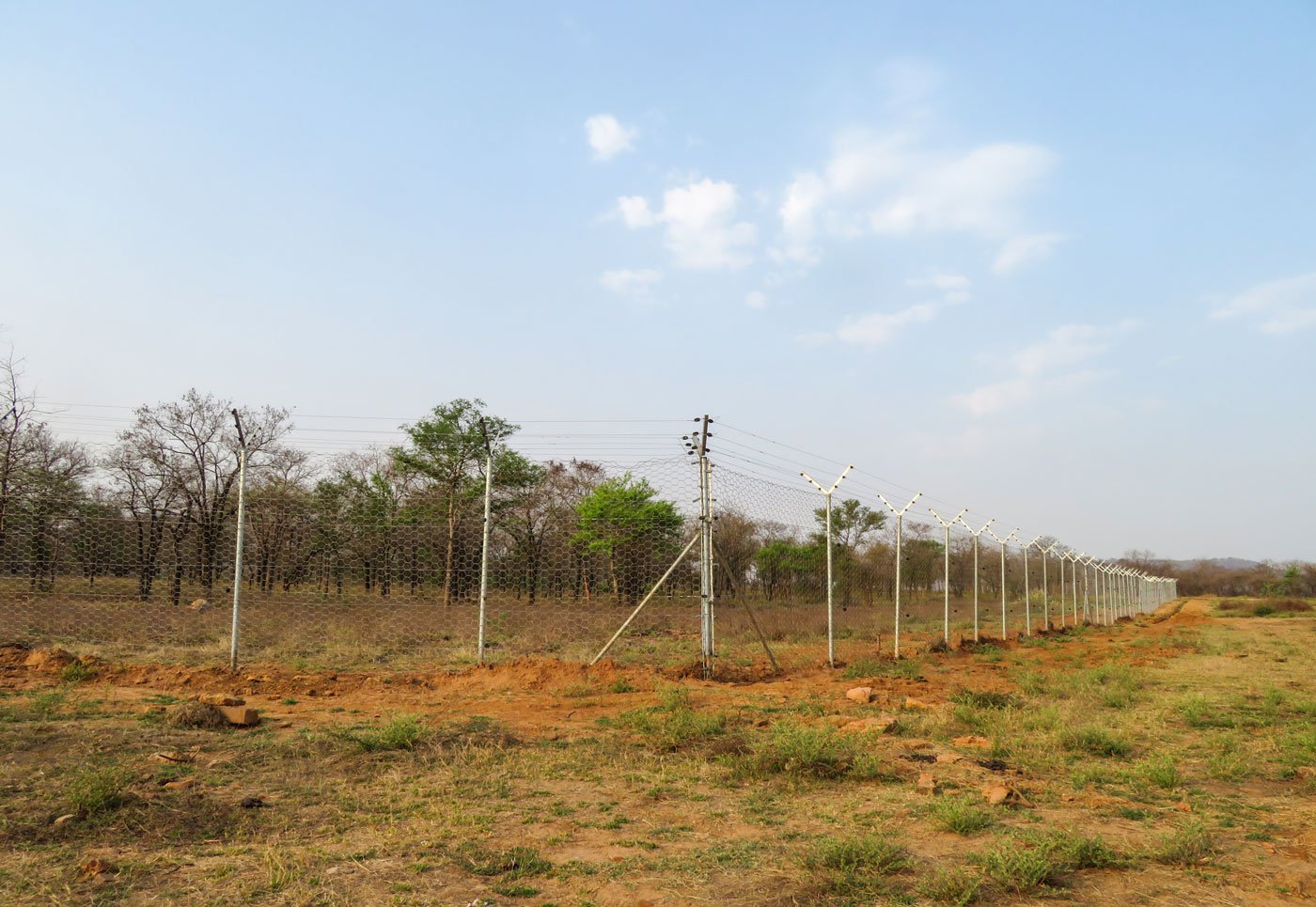
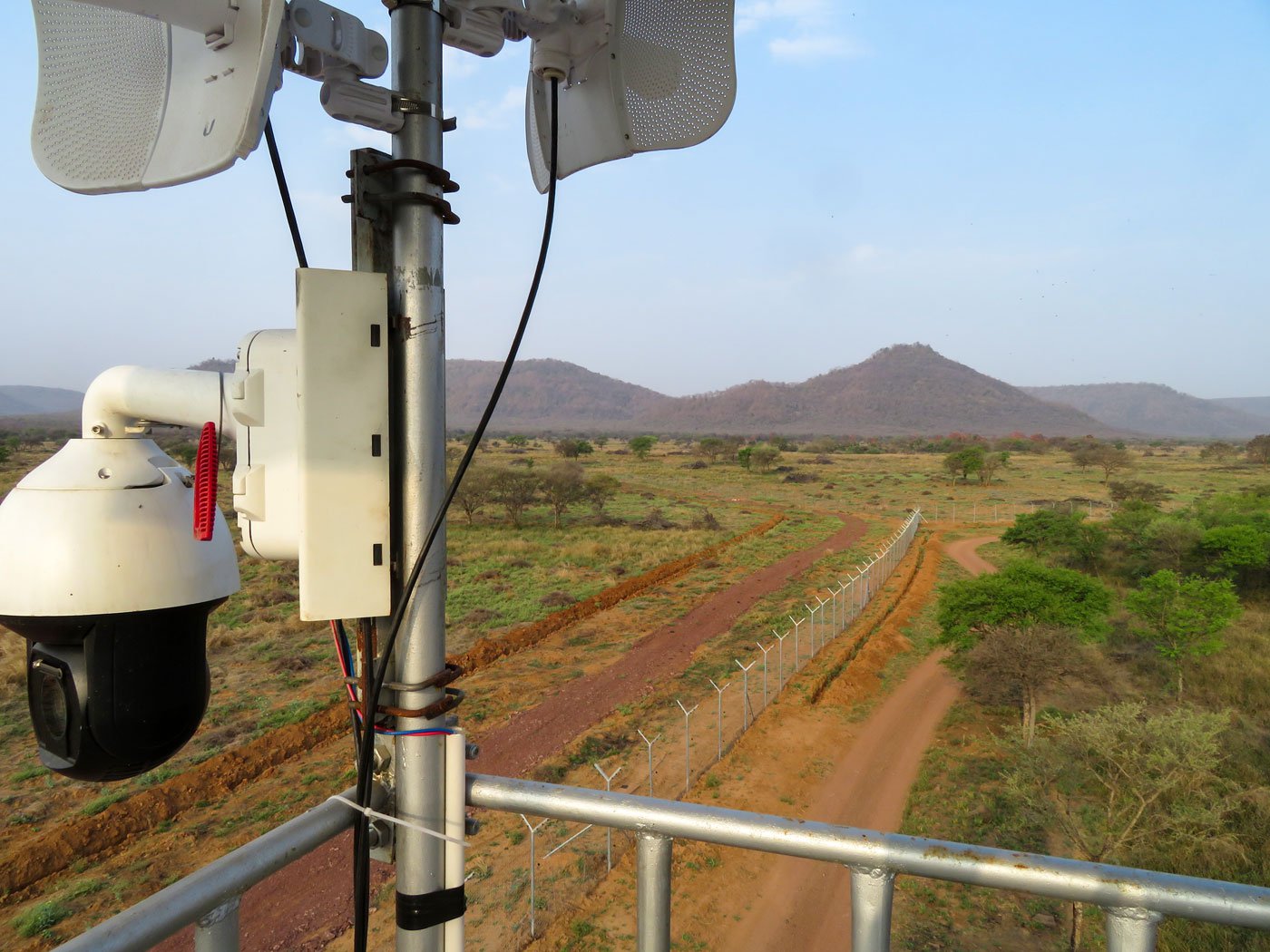
Left: The enclosure built for the first batch of 20 cheetahs from Africa coming to Kuno in August this year. Right: View of the area from a watchtower
“This exclusionary approach to conservation – that humans and animals cannot live together – is assumed, not demonstrated,” points out Prof. Kabra. She co-authored a paper published in January this year on dispossession for conservation. She asks how, despite the Forest Rights Act 2006 coming into effect and laying down safeguards for forest dwellers, were a colossal 14,500 families relocated from tiger reserves across India. She argues that the reason this rapid relocation happened is because the dice are always loaded in favour of the authorities who use a variety of legal and procedural measures to get villagers to ‘voluntarily’ relocate.
Bagcha’s residents say they have been offered Rs. 15 lakhs to move out. They can either take the entire money in cash or get land and money to build a house. “One option is 3.7 lakh rupees to construct a house and the balance in land for farming. But they are also deducting money from that for electricity connections,
pucca
roads, hand pumps, borewells and so on,” says Raghunath.
The site for their new home is Bamura, near Goras in Karahal tehsil , about 35 kilometres from Bagcha. “The new land we have been shown is of inferior quality to our present one. Some of it is outright rocky and has low productivity. It will take a long time for the land to become productive, and no one will support us for the first three years,” says Kallo.
*****
Project Cheetah lists ‘ saving the ecosystem ’ among the primary reasons for bringing African cheetahs to India. A point that exasperates wildlife experts like Dr. Ravi Chellam. “Cheetahs are being brought to India in the name of grassland conservation. It makes no sense as India already has endangered charismatic animals like caracal, black buck and great Indian bustard in these grasslands. Where is the need to bring something from Africa?” asks the wildlife biologist and CEO of Metastring Foundation.
He says, moreover, the population of cheetahs the government is aiming for in 15 years – 36 – is not viable or self-sustaining and will have no genetic vigour. “It’s going to be nothing but a glorified and expensive safari park,” adds Chellam who is a member of the Biodiversity Collaborative, a network that promotes biodiversity research and conservation in India.
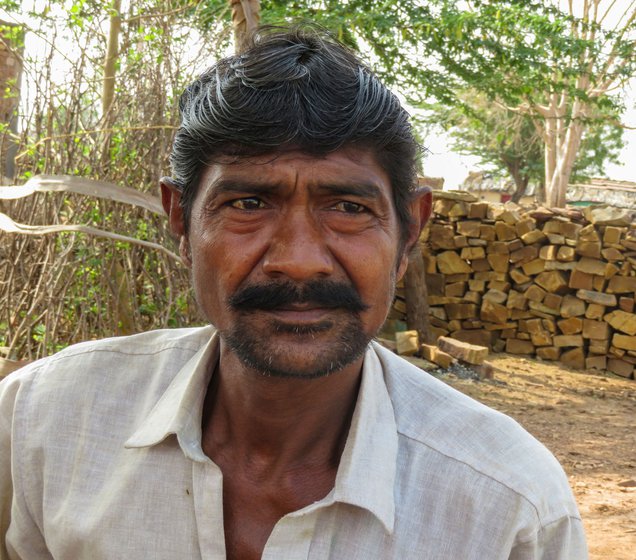
Mangu Adivasi was among those displaced from Kuno 22 years ago for the lions from Gujarat, which never came
The Sahariyas’ tough stand is bolstered by the still painful memory of unfulfilled promises to their neighbours in the Kuno forest – the 28 villages with an estimated 1,650 families who were hurriedly moved out of their homes in 1999 to make way for lions from Gujarat
It has been 22 years since Mangu Adivasi was ejected from his home in Kuno, displaced for lions that never came, eking a living out of poor-quality land that he got as compensation. He agrees with Chellam: “The cheetah is coming only for show. To make and broadcast internationally and nationally that such a thing has been done in Kuno. When the cheetahs will be released [into the wild], some of them will be killed by the already existing animals, some may die of electrocution from the enclosure that has been built. We will see.”
There is the additional but not insignificant risk of pathogens brought in by the foreign animals. “The plan does not fully take into consideration the risks associated with known pathogens on the species exposure to diseases that are new to the incoming cheetahs,” says Dr. Karthikeyan Vasudevan.
A conservation biologist and chief scientist of the Laboratory for the Conservation of Endangered Species located at the Centre for Cellular and Molecular Biology in Hyderabad, Dr. Karthikeyan warns of “possible exposure of native wildlife to prion and other diseases, failure to sustain a viable population long-term, and pathogens that might be in the environment [which may impact the cheetahs].”
There are also widespread rumours that the cheetah’s arrival – which was supposed to happen last year – has been held up over a technicality. India’s Wild Life (Protection) Act of 1972 clearly lays down in section 49B that any trade in ivory, even imports, is strictly prohibited. Namibia, the rumours go, is unwilling to gift any cheetahs unless India supports a delisting of the ban on ivory under the Convention on International Trade in Endangered Species of Wild Fauna and Flora (CITES), which will allow international trade in that commodity. No public official was willing to confirm or deny this.
Meanwhile, Bagcha is in a state of suspended animation. On his way into the forest to collect the resin he had set earlier, Hareth Adivasi stops to say, “We are not bigger than the government. We will have to do what they tell us. We do not want to go, but they can force us to leave.”
The reporter would like to thank Saurabh Chowdhury for his invaluable help in researching this piece and with translation.
